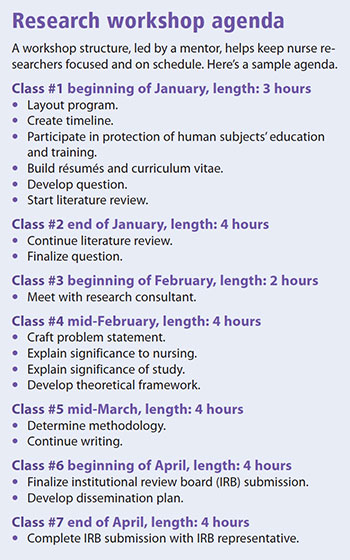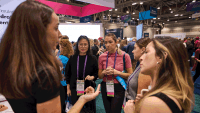A workshop helps frontline nurses pursue research interests.
By Stephanie A. Walton, MSN, RN, NPD-BC; Kara Sankey, MSN, CNL, RN; and Nichelle Jensen, DNP, APNP
Encouraging all levels of nursing to participate in research is an important component of establishing an inclusive research culture. Here’s how we built that culture at our organization.
How we began


How the program works


This program encourages frontline nursing staff to participate in research by providing dedicated working time, resources, and motivation to pursue areas of research that are meaningful to their daily practice. Using a workshop structure, research proposals are written with a mentor present to help keep research groups on a strict timeline. (See Research workshop agenda.) This format allows for time and resources for bedside staff to engage in research, and focusing on patient outcomes keeps them engaged and improves participation. After research is completed, plans are developed to help researchers disseminate their findings internally and externally. The program consists of new cohort brainstorming sessions every 12 to 18 months to support continued growth and ongoing research development within the organization.
Spike in research
The program has resulted in an exponential increase in research activity. We went from one research project that took just over 2 years to complete, to four projects completed in the last 1½ years at five locations. These outcomes have been sustained over 2 years, proving that creating a structure helps embed research in the culture.
The authors work at Mercyhealth™ in Janesville, Wisconsin. Stephanie A. Walton is a patient navigator, Kara Sankey is director of IP case management and social services, and Nichelle Jensen is a hospitalist nurse practitioner.
Selected reference
Wilkes L, Jackson D. Enabling research cultures in nursing: Insights from a multidisciplinary group of experienced researchers. Nurse Res. 2013;20(4):28-34.
ant1-Magnet Stories-1221


















